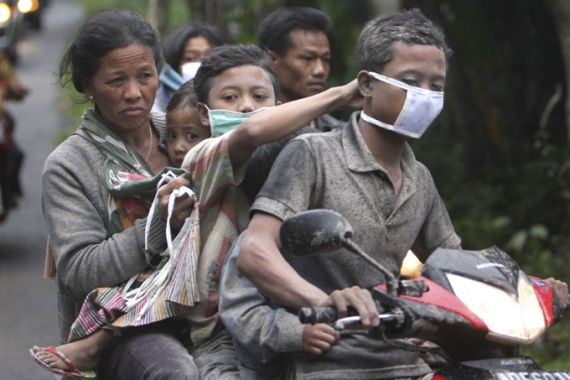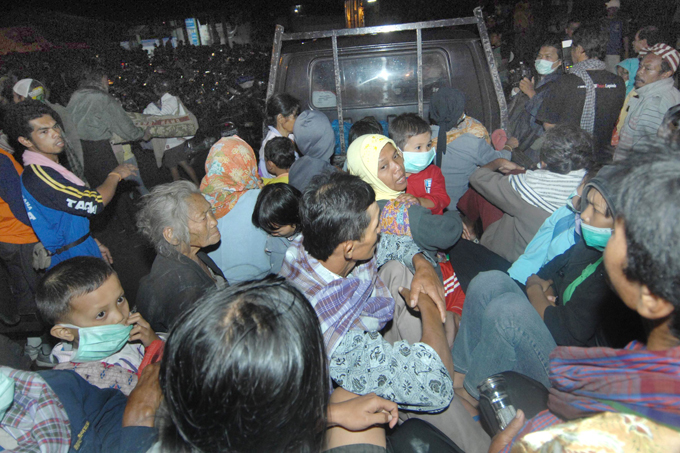New eruption at Indonesia volcano
Volcanic activity said to be three times the power of last month’s eruption that killed at least 38 people.

 |
| More than 70,000 people have been taken in by government shelters or have left for other parts of the country [AFP] |
Indonesia’s Mount Merapi volcano has errupted in an explosion three times as powerful as an eruption last week that forced tens of thousands of residents from their homes.
Gas and molten lava were spewing from the volcano on Thursday on the island of Java, again making people flee to makeshift government shelters. At least 38 people have been killed since the eruption on October 26.
Keep reading
list of 4 itemsWorld’s coral reefs face global bleaching crisis
Why is Germany maintaining economic ties with China?
Australia’s Great Barrier Reef suffers worst bleaching on record
More than 70,000 people have already been taken in by the shelters or have left for other parts of the country, with the government warning that the pressure within the volcano may not yet have peaked.
No casualties have so far been reported from the most recent eruption.
‘Extraordinary eruption’
“This is an extraordinary eruption,” Surono, a state volcanologist, said, adding that the blast was three times the force of the first eruption last month.
“It looks like we may be entering an even worse stage now.”
Surono had earlier said that energy in the crater could be easing, though rocks and debris were flying from the Mount Merapi.
Soldiers helped women and children climb onto trucks and drove them to safety.
Dust was strewn onto vehicles, homes and roads as far as 130km from the volcano.
The danger zone was widened from 10 to 15km from the peak because of the heightened threat.
Before this year Merapi last erupted in 2006, when it sent an avalanche of pyroclastic ash – hot gases and rock fragments – racing down the mountain and killing two people.
A similar eruption in 1994 killed 60 people, while 1,300 people died in an eruption in 1930.
There are more than 129 active volcanoes in Indonesia, which are spread across 17,500 islands.
The country is prone to eruptions and earthquakes due to its location within the so-called Ring of Fire – a series of fault lines stretching from the western Hemisphere through Japan and Southeast Asia.